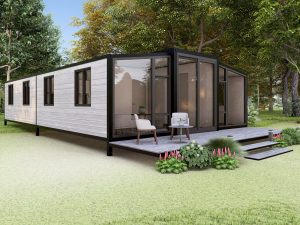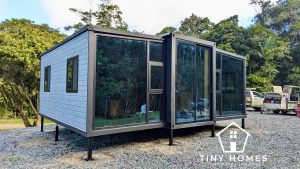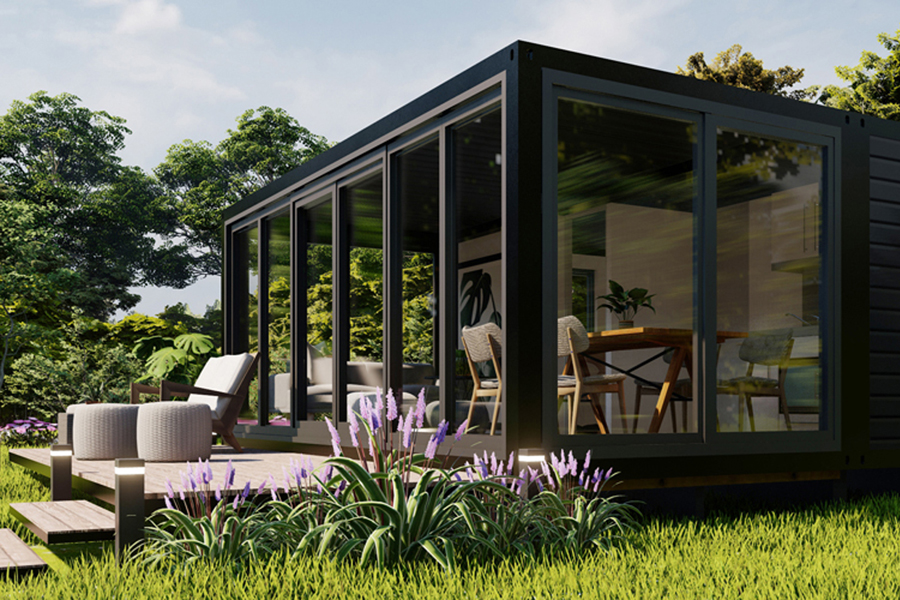Off-grid living has become a growing trend in recent years as more people seek to break free from the constraints of traditional housing and embrace a simpler, self-sufficient lifestyle. One of the most popular ways to achieve this is through tiny homes. These small, mobile dwellings offer an affordable, sustainable, and minimalist approach to living that aligns perfectly with the principles of off-grid living.
At Tiny Homes 4U, we believe that everyone deserves the freedom to live life on their own terms, without being burdened by high utility costs, mortgages, or the traditional demands of modern housing. If you’re considering downsizing or going off-grid, this guide will walk you through everything you need to know about tiny homes for sale and how they can help you achieve a self-sufficient lifestyle.
The Appeal of Tiny Homes for Off-Grid Living
Embracing Sustainability
The growing awareness of environmental issues such as climate change, pollution, and deforestation has led many people to reconsider how they live and the impact of their lifestyles on the planet. Tiny homes are attractive for those looking to reduce their environmental footprint.
• Lower Energy Consumption: Tiny homes are designed to be energy-efficient by default. With smaller spaces to heat or cool, it’s easier to maintain a comfortable temperature without relying on excessive amounts of energy. Many off-grid tiny homes are equipped with solar panels, rainwater collection systems, and composting toilets, making them ideal for those who want to live off the grid sustainably.
• Reduced Carbon Footprint: Tiny homes are typically made with fewer materials and have a smaller environmental impact than traditional homes. If you’re looking for pre-built tiny homes for sale or building your own, the materials and techniques used are often eco-friendly and sustainable.
• Minimal Waste: Off-grid tiny homes are designed with efficient water systems, waste management solutions, and renewable energy sources that reduce the amount of waste generated daily. These homes often feature compact, multifunctional designs that optimise space and reduce consumption.

Financial Freedom and Lower Costs
One of the most attractive aspects of tiny homes is the potential for financial freedom.
• Affordable Housing: Tiny homes significantly reduce costs compared to traditional housing. The average cost of a tiny house is typically much lower than purchasing a standard home. This cost reduction extends beyond just the purchase price, as tiny homes also require fewer resources to maintain.
• Lower Utility Bills: Tiny homes are designed to use less water and electricity, significantly reducing utility costs. Solar packages, rainwater systems, and energy-efficient appliances make it easier to maintain a self-sufficient lifestyle while keeping your monthly bills low.
• No Mortgage Payments: For many people, a mortgage is one of the biggest financial burdens they face. Tiny homes for sale offer an alternative to this traditional model by allowing you to own your home outright. This means no monthly mortgage payments, no property taxes, and more money in your pocket for other things.
Freedom and Mobility
Tiny homes are typically mobile, which means you can live anywhere you choose. If you want to live on a remote piece of land or travel around the country, tiny homes for off-grid living offer the freedom to design your lifestyle.
• Location Flexibility: With a tiny home, you aren’t tied to a permanent address. You can move your home to any location, in a secluded forest, a quiet beachside, or a rural off-grid property.
• Escape from Urban Stress: Living off-grid in a tiny home allows you to escape the chaos and stress of city life. For many, this is a chance to reconnect with nature, enjoy a slower pace of life, and live more intentionally.
Designing Your Off-Grid Tiny Home
Creating an off-grid tiny home involves more than just downsizing; it requires careful planning to ensure that your home is fully functional and sustainable. Here are some of the key design elements to consider when choosing or building a tiny home for off-grid living.

Energy Systems
Energy independence is crucial when living off-grid. Most tiny homes for off-grid living come with renewable energy systems such as solar panels or wind turbines. These systems allow you to generate your power, significantly reducing or eliminating your reliance on grid electricity.
• Solar Power: Solar panels are the most common energy source for off-grid tiny homes. Solar panels can provide enough power to run lights, appliances, and heating systems depending on your location. Batteries are often used to store excess power for use during cloudy days or at night.
• Wind Power: If you’re living in an area with consistent winds, wind turbines can greatly complement your solar panels. Wind energy can help keep your home powered up even when the sun isn’t shining.
• Backup Power: In some off-grid tiny homes, generators may be included as a backup power source when solar and wind power aren’t sufficient.
Water Systems
Water is essential for everyday living, and in an off-grid tiny home, you’ll need a system that collects, stores, and treats it.
• Rainwater Harvesting: Many off-grid tiny homes use rainwater collection systems to gather water for drinking, cooking, cleaning, and other uses. These systems can be designed to collect water from the roof and filter it for safe use.
• Water Storage: To ensure a consistent water supply, large storage tanks that can hold the collected rainwater are important. You may also want to install a filtration system to purify the water for drinking.
• Greywater Recycling: To maximise water use, some tiny homes incorporate greywater systems that reuse water from sinks, showers, and washing machines for irrigation or flushing toilets.
Waste Management
Managing waste in an off-grid tiny home requires creative solutions to ensure that you minimise your environmental impact.
• Composting Toilets: Instead of relying on a traditional flush toilet, many off-grid tiny homes use composting toilets that break down waste into compost. This reduces water usage and eliminates the need for septic systems.
• Wastewater Treatment: For homes that use water-based systems, wastewater treatment methods such as biofilters or constructed wetlands can treat and purify greywater before releasing it back into the environment.
Space Optimisation
Tiny homes are designed to make the most of limited space. Every inch counts, so innovative storage solutions and multi-purpose furniture are essential for comfort and functionality.
• Built-In Storage: Many off-grid tiny homes incorporate built-in cabinets, drawers, and shelving to maximise available storage space.
• Multi-Functional Furniture: Furniture that serves multiple purposes, such as fold-out beds or convertible tables, can make tiny homes feel more spacious and flexible.
Finding the Right Home for Your Off-Grid Lifestyle
If you’re ready to start your off-grid journey, there are a variety of tiny homes for sale that can meet your needs. When searching for a tiny house, consider the following factors to ensure you choose the right option for your off-grid lifestyle.
• Size and Layout: Tiny homes come in various sizes, from compact units that are just large enough to fit a bed and kitchen to larger models that can accommodate multiple rooms. Choose a layout that fits your needs.
• Energy Features: Look for tiny homes with solar panels, wind turbines, or other renewable energy sources. Some homes may also include backup generators or batteries for added energy security.
• Water and Waste Systems: Make sure the tiny home you choose includes a water collection and filtration system and a waste management system like a composting toilet.
• Mobility: If you plan to move your tiny home regularly, consider a mobile model that can easily be towed. These homes are typically built on wheels and can be relocated to different locations.
Tiny homes for off-grid living present an exciting opportunity for those seeking a sustainable, self-sufficient lifestyle. With their ability to reduce environmental impact, lower living costs, and provide the freedom to live anywhere, tiny homes offer a refreshing alternative to traditional housing. Whether you want to downsize, reduce your carbon footprint, or simply enjoy a simpler, more mobile lifestyle, tiny homes provide the perfect solution. Contact us today and let our team help you start your journey to a simpler, more sustainable lifestyle!

